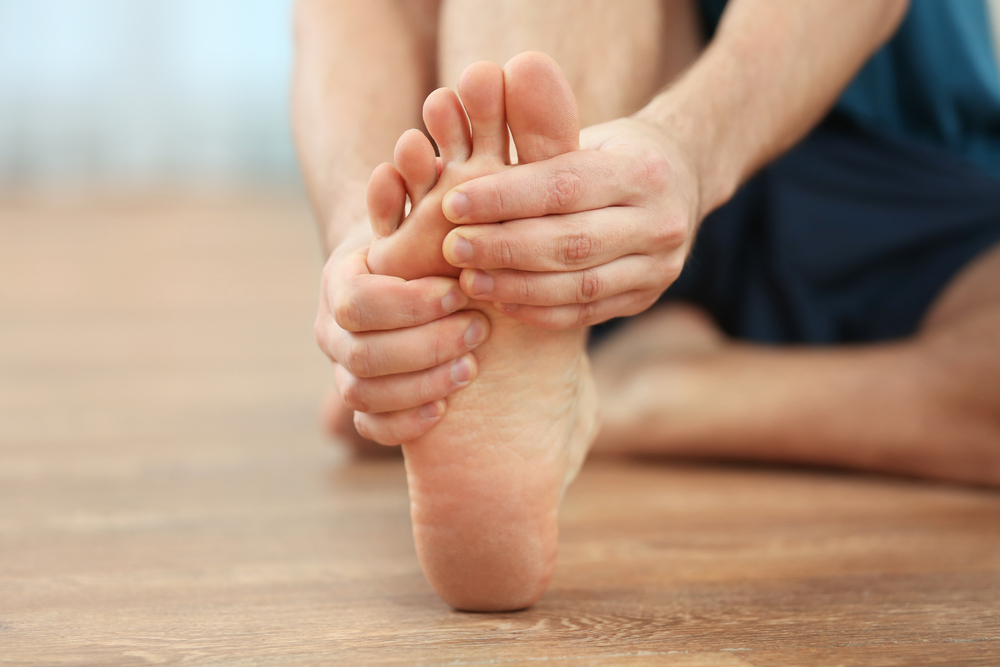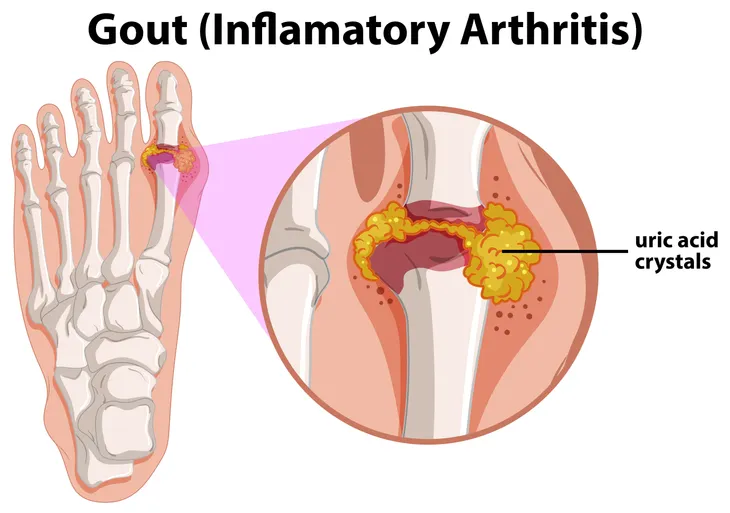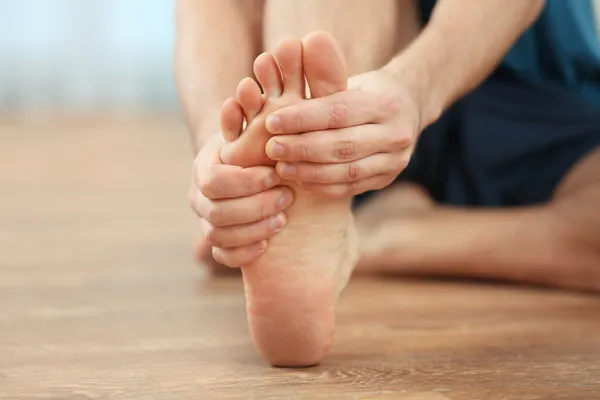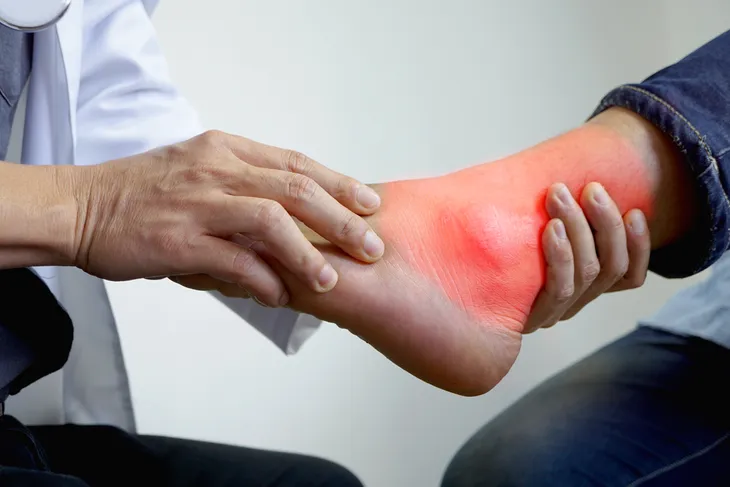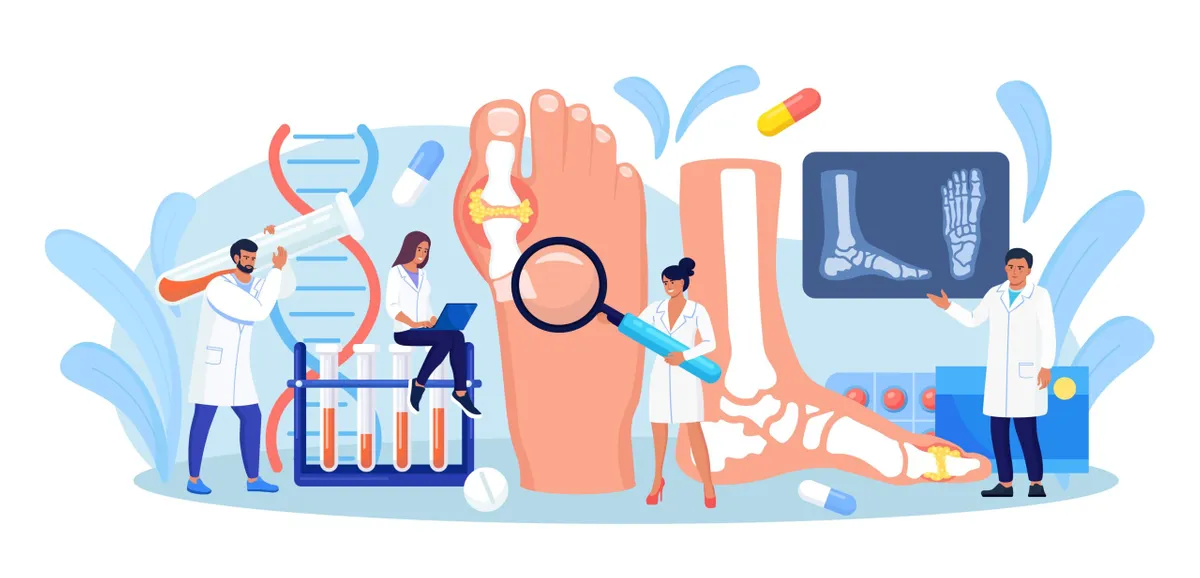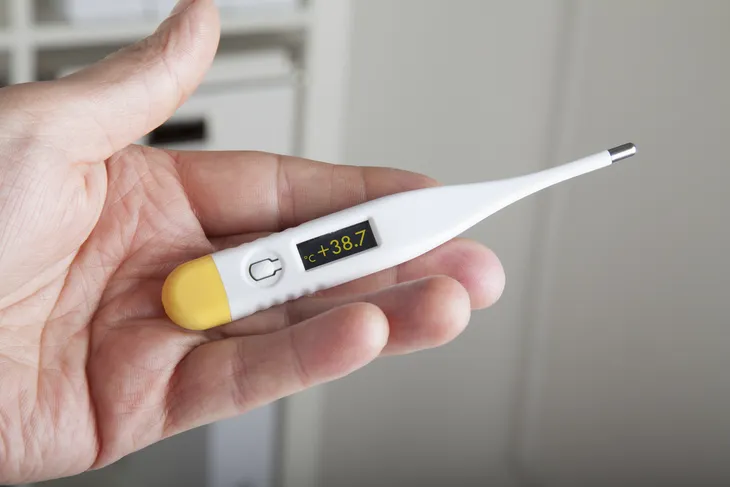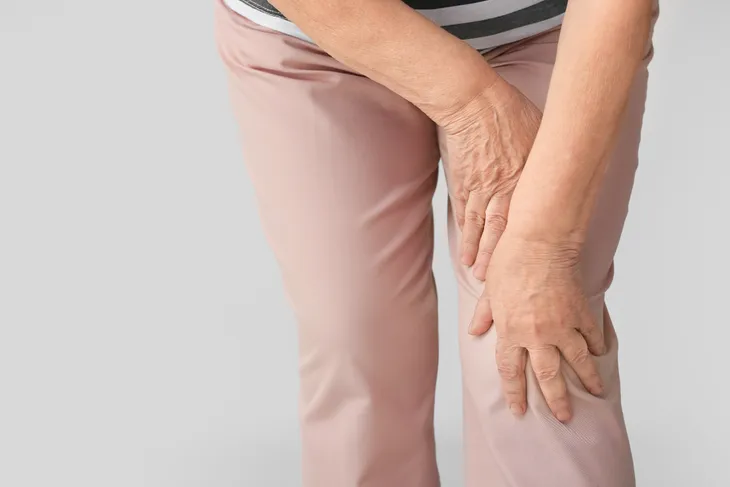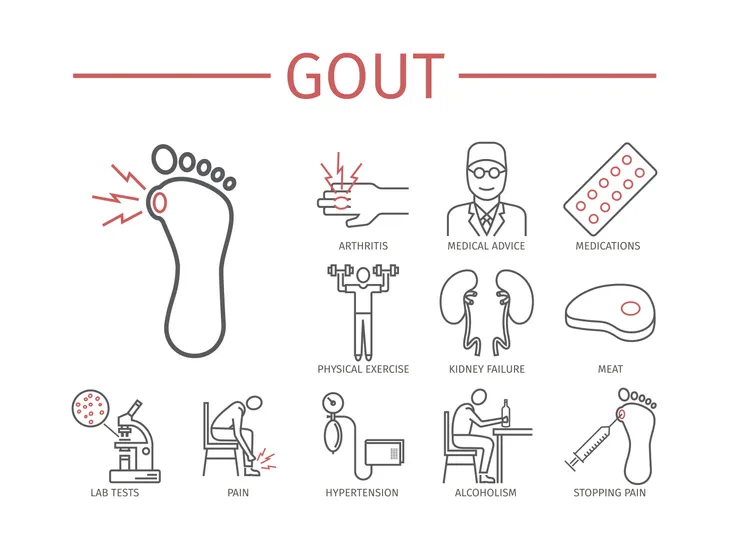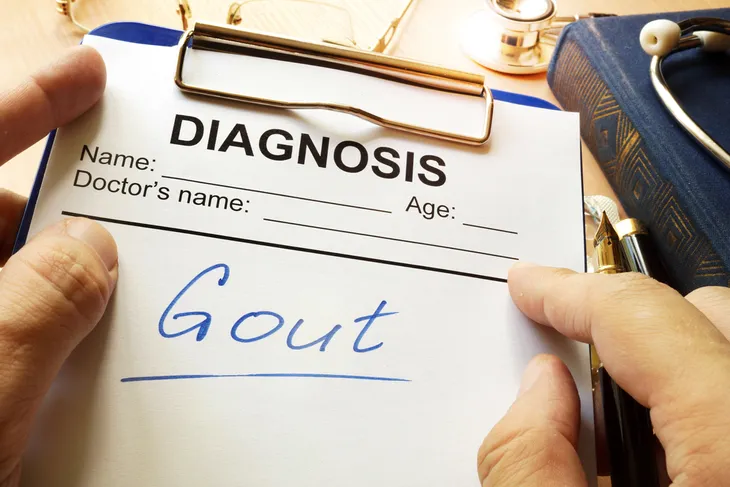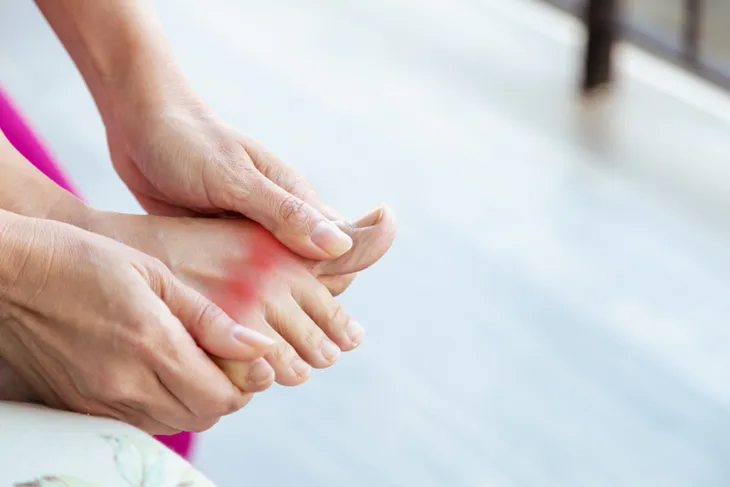Gout is a painful condition that is seeing a resurgence of sufferers. This uncomfortable affliction is a form of arthritis, often called gouty arthritis. Gout can affect anyone, but it is most common in people over the age of 30, and is more common in men than women. The causes of gout are mainly diet related, but overall the condition is caused by high levels of uric acids in the body, which collects in the joints and can cause pain. While most gout sufferers have a condition called hyperuricemia, which is abnormally high uric acid blood levels, not all do. Conversely, not all people with high uric acid levels suffer from gout.
The triggers of a gout attack are mainly diet related, but dehydration is also a leading cause of gout pain. Certain beverages, such as coffee, tea, and alcohol can trigger dehydration. Medications can also play a role in gout attacks. The symptoms of gout are very similar to other forms of arthritis, so it can be hard to diagnose. Here are 13 of the most common symptoms of gout…
1. Pain In The Toe
Pain in the big toe is one of the most notable symptoms of gout, and the sign that often plagues sufferers the most. This symptom, referred to by medical doctors as podagra, is often what brings about a gout diagnosis. Gout strikes due to high levels of uric acid, a chemical created by the body as it breaks down purines in certain foods (i.e., mackerel, anchovies, beer, peas, and beef liver).
In healthy people, uric acid dissolves in the blood, travels to the kidneys, and is expelled by the body via urine. However, folks with gout produce too much uric acid or don’t eliminate it properly from the body. The excess acid remains in the blood and causes hyperuricemia. Excess uric acid also accumulates in the joint of the big toe, which results is an incredibly sore toe and an inability to walk. The pain can render you limp until it fades away after a few hours or days.
2. Tenderness
Once the initial pain of a gout attack has lifted, you may experience long-term tenderness in the joint of the big toe where excess uric acid tends to accumulate. This can be directly at the source of the afflicted joint, but it can also be a type of radiating pain that reverberates from the toe and out across the body.
If one big toe is affected by gout, you may also experience tenderness in your entire foot on the same side. This pain and tenderness can affect walking from the foot and all the way up to and beyond your knee. This tenderness can last for weeks, and you may find walking and standing difficult, as your body tries to heal itself.
3. Swelling
As your big toe joint is the area largely affected by gout and uric acid build up, your body may react with massive inflammation. It’s not uncommon for the area around the joint (the entire big toe on one or both sides) to become very swollen.
Again, because gout pain can extend from the big toe to the foot, and travel all the way up the calf and shin to the knee, swelling may also extend past the affected area to the entire lower leg. If one or both of your big toes is affected by gout, the entire foot and leg may become inflamed, red, and painful. Touching the swollen areas may be very painful as well, but you can relieve some of the discomfort by applying cold compresses directly to the inflamed areas.
4. Sudden Pain Attacks
If you suffer from gout, you may experience sudden attacks of extreme pain, usually in the toes, feet, legs, and lower extremities, that can reverberate throughout the body. You may feel fine for a long period of time, but find yourself paralyzed from pain in a sudden excruciating moment.
Walking and standing for long periods of time are certainly out of the question when an attack sets in. Even people walking near you can cause pain from the shift or vibrations in the flooring. The only solution to ease gout pain and discomfort during an attack is medically prescribed drugs, rest, applying cold compresses to bring down swelling, and taking time to allow your body to recover.
5. Night Pain
A common time for gout pain to strike is in the middle of the night. You may go to bed feeling great but wake up in a start because your toe joints or feet are killing you because you suffered from a gout attack overnight. It’s obviously very difficult to sleep soundly or stay sleeping when you’re dealing with gout pain.
If you are in the midst of a gout attack, even pressure from crossing your legs or constricting them in a sleep position can exaggerate pain. If you sleep with a spouse or pet, slight contact, and even the weight of your sheets can become unbearable. You can be bedridden for a few days if walking and standing are painful. However, the pain of lying in bed can often be severe.
6. Redness
When you experience inflammation and swelling in a joint, the area may develop a red tinge and the skin may become very bloated. Gout swelling is due to an accumulation of uric acid and can cause red radiating lines resembling infection under the skin.
In areas that experience acute gout pain (i.e., the big toes and feet) the skin surrounding the area may even turn purple in color. If possible, take the time to recovery by resting, you can also apply the rest, ice, cold compression, and elevation (RICE) method to the affected area. Also, be sure to hydrate yourself to help dilute the concentration of uric acid and flush it out of the body.
7. Kidney Stones
Gout may be an amazingly painful condition, but it could lead to an equally painful symptom, kidney stones. The buildup of excess uric acid in the body may not only collect in joints but also make its way into your urinary tract where the buildup will cause the formation of painful kidney stones.
If uric acid collects in the urinary tract to form kidney stones, you will suffer the telltale pain. The symptoms of kidney stones include painful and possibly bloody urination, severe abdominal pain, and even back pain. The pain of kidney stones can be so intense that it can cause nausea and vomiting as secondary symptoms.
8. Uric Acid Collections Around The Body
If you suffer from uric acid buildup, it can collect in more than one area. For gout, the buildup is typically in the joints, usually in the big toe joints and finger joints. However, uric acid can also accumulate within the soft tissue around the body, resulting in the development of hard nodules in your ear lobes, elbow, hands, and ankles.
This buildup of uric acid in the bodily tissues is called tophi by medical professionals. To identify tophi, your doctor may take samples of the crystalized material found inside these formations. This is typically done via biopsy of the nodule and can help confirm a gout diagnosis.
9. Fever
Gout may start affecting only one joint (i.e., the big toe or fingers), but it may soon move to multiple areas throughout the body. When gout spreads to multiple areas of the body, doctors refer to it as polyarticular gout, due to the inflammatory nature of the condition.
With the development of polyarticular gout, fever is a common symptom. And patients will typically describe the onset of a fever that is typically low grade, which is common with massive gout inflammation. Other polyarticular gout symptoms, in addition to a low grade fever, include nausea, fatigue, and general flu-like malaise.
10. Itchy and Dry Skin
One unfortunate side effect of the swelling associated with gout is the damage it does to the tissues and skin around the affected area. The inflammation and swelling of uric acid accumulation often stretch the skin severely, resulting in itchy, dry, irritated, and flaky skin.
11. Peeling Skin
In extreme cases, if gout is left untreated, and swelling becomes exaggerated, tears may form in the affected skin, leading to peeling, cracks, and even bleeding. If you experience bleeding at the site of gout inflammation, it’s important to keep the area clean and free from infection. Do your part by applying a topical first aid lotion and covering the torn area with a clean, dry bandage. The last thing you need is an infection, which will only put more pressure and pain on the affected joint.
12. Warmth
We’ve heard of cold feet before but never hot feet! This symptom is probably a result of the swelling and redness. Health.com says that warmth is one of several common symptoms of gout. Of course, the warmth is typically experienced in the big toe, where the joint is affected. The source writes, “In some cases, the affected joint will be red and sore and radiate heat.”
13. Joint Pain
The first symptom of gout is pain in the toe, which is a result of the uric acid that settles into the joint (which is usually the big toe) and triggers intense pain. While most people experience this pain in their big toe, Health.com points out that it can also occur in other joints, such as ankles, knees, wrists, fingers, and elbows.
Everyday Health describes this joint pain as “crushing, throbbing, or excruciating.” The source also notes that for some people the pain is so severe that even putting their foot (or whatever joint is affected) under something as delicate as a bed sheet or blanket, will cause pain.
14. Symptoms Can Lie Dormant
While gout can never be cured, patients can find some relief in the fact that their symptoms will typically only last for a few days before they eventually subside. The National Institute of Arthritis and Musculoskeletal and Skin Diseases says people with acute gout can go months without experiencing another attack.
Sadly it’s not all good news! The same source also notes that while the symptoms can go dormant for a long period of time, they will come back with a vengeance. Their attacks can become more frequent and last longer. According to Everyday Health, recurrent attacks are referred to as chronic gout and sometimes called “recurrent gout or gouty arthritis.”
15. Might Have Trouble with Diagnosis
You’ve probably already noticed that the symptoms of gout are very similar to those affecting arthritis patients. Because of this, gout can be very hard to diagnose. Health.com notes that in order to get a definitive diagnosis, doctors must “use a needle to draw out joint fluid from the affected area, then they look for uric acid crystals under the microscope.”
To make matters even more complicated, the source notes that some gout sufferers have a normal or even lower amount of uric acid during one of their attacks, so the needle method isn’t always accurate. If this is the case, doctors can also use CT scans. If it’s a very severe case of gout, they could also look for joint damage in an X-ray, says Health.com.
16. If Left Untreated
People who suffer from gout must get treatment, because ignoring the problem will only make it worse, or create bigger problems to deal with. “Although gout is almost always treatable, it’s possible for gout to cause long-term damage-including severe attacks, chronic arthritis, and kidney stones, if you don’t seek medical care,” says Health.com.
Thankfully, the Arthritis Society says gout rarely ever advances to this stage, because it is such a treatable and manageable condition. People who suffer from gout can easily control their condition and limit its impact by taking the right medication and by making a few lifestyle changes.
17. Risk Factors
Gout develops when the body produces too much uric acid or if your kidneys don’t filter enough out. This can technically happen to anyone, but there are certain factors that puts you at higher risk of developing it. This includes people with obesity, high blood pressure, or diabetes.
Healthline says gout is more likely to be diagnosed with men between the ages of 30 and 50, and women after menopause. People with a family history of gout may be more likely to experience it themselves. Gout also occurs in those with kidney problems, when consuming certain foods that cause a build-up of uric acid, and drinking too much alcohol.
18. Treatment Options
The Arthritis Foundation points out a few ways gout can be treated. If you suspect your pain is from gout, ice and elevate the joint and drink plenty of fluids. You should also reduce stress, as it can possibly worsen the attack.
Your doctor may prescribe a number of medications to manage your condition. It may be a non-steroidal anti-inflammatory drug to relieve pain and swelling. There are also corticosteroids that can be injected and relieve pain within 24 hours of treatment. Alternatively, your doctor may recommend colchicine if your attack has begun within the past 24 hours. There are other types of medication that may also be prescribed to help prevent attacks.
19. Prevention
While some factors are uncontrollable, there are certain lifestyle choices you can make to lower your chances of developing gout. The easiest thing you can do is eliminate foods from your diet that cause a build-up of uric acid. Red meat, offal, and seafood are some examples. It’s also best to avoid drinking too much beer or spirits.
Mayo Clinic recommends eating a balanced diet of complex carbs, water, and lean protein. Some research even shows how drinking coffee in moderation may be associated with a reduced risk of gout. Avoid saturated fats, red meats, and high amounts of sugar-sweetened foods.
20. Living With Gout
Since there is no permanent cure for gout, people must learn how to manage their condition. Luckily, it’s possible for you to have long periods of time without experiencing another attack. Proper treatments and lifestyle changes can lower the amount of episodes you experience. By adjusting your diet, avoiding excess alcohol consumption, and monitoring your symptoms, you can improve your quality of life.
Like this article? You might like these as well:
